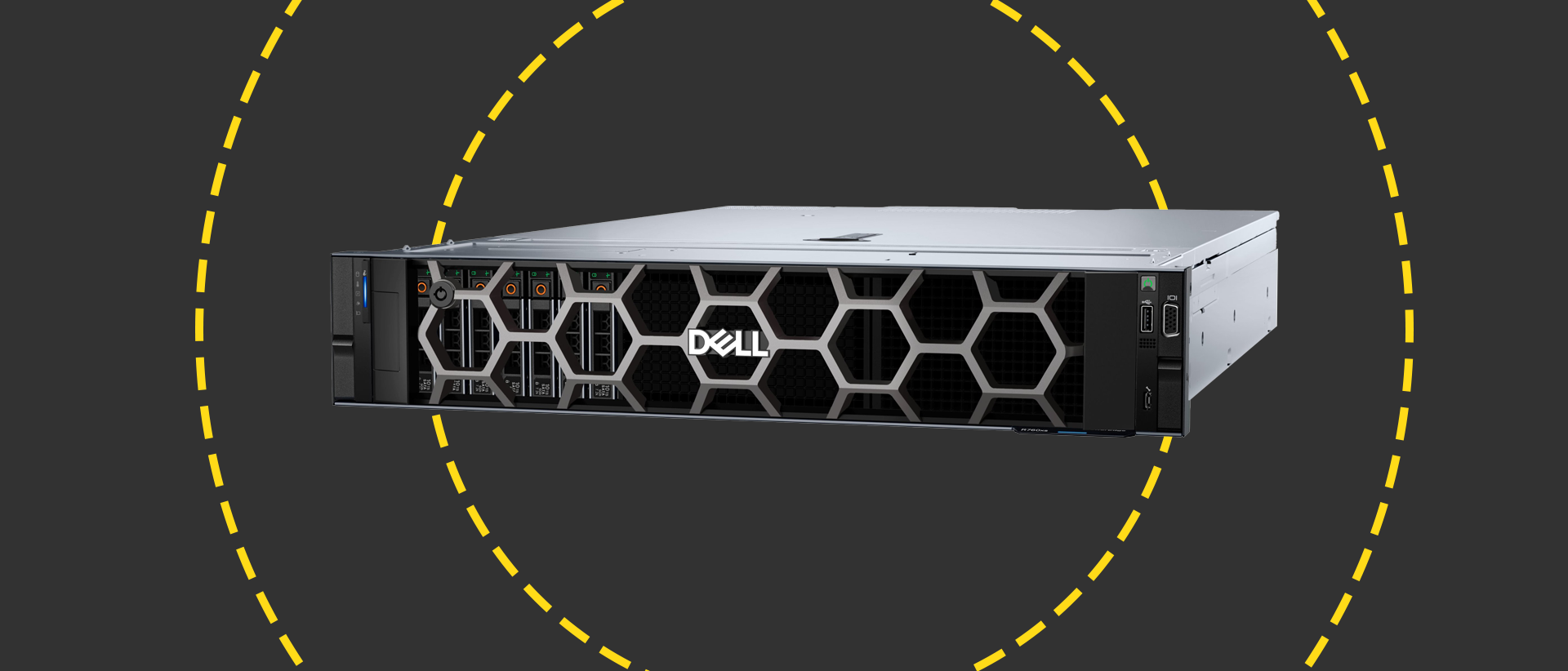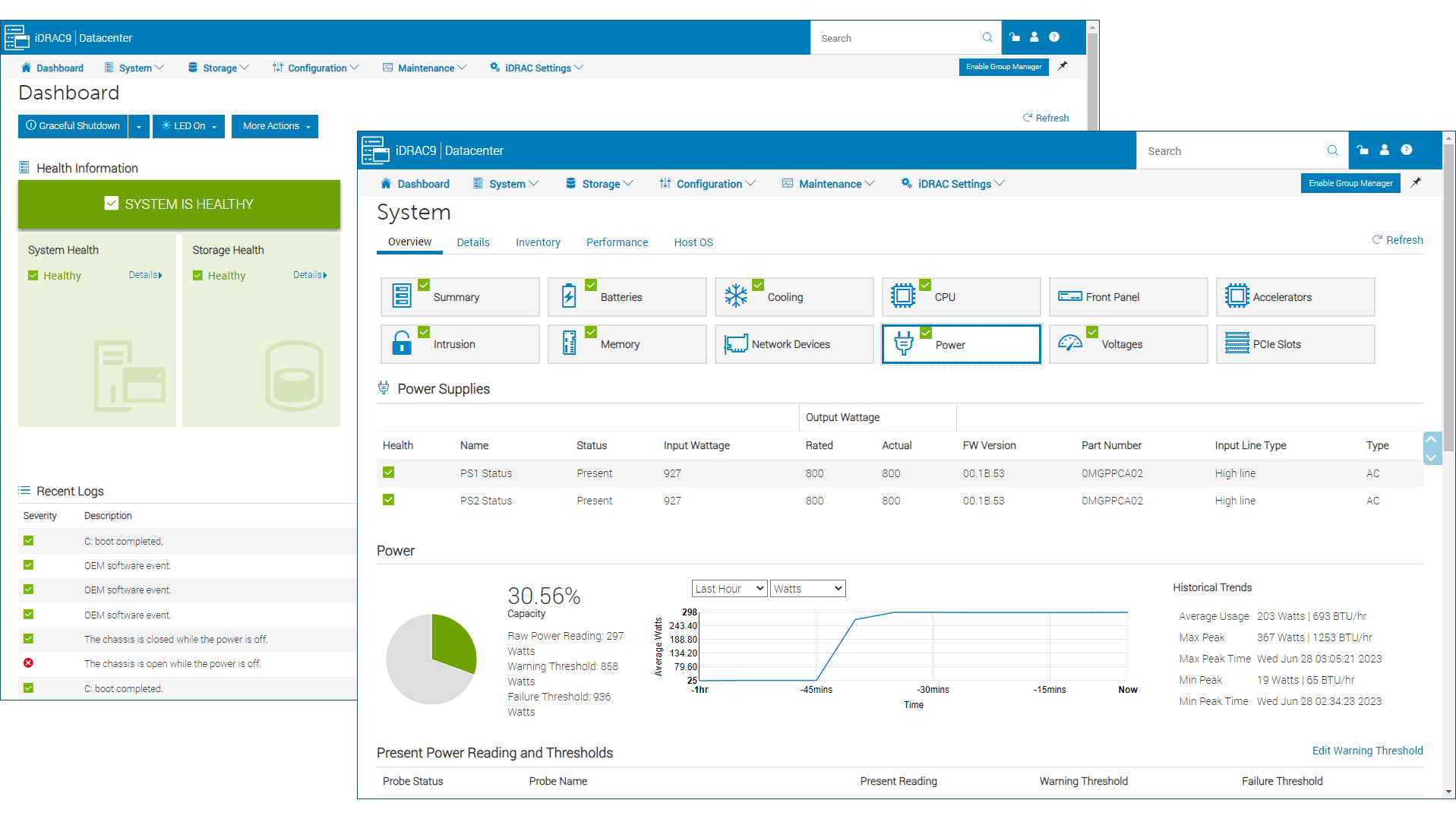Dell PowerEdge R760xs review: A right-sized Xeon Scalable Gen 4 server
Dell's PowerEdge R760xs is ideal for businesses seeking more processing power at a sensible price

-
+
Flexible configurations
-
+
Great value
-
+
32-core Xeon Scalable CPU support
-
+
Surprising expansion potential
-
+
Top server management features

Dell's PowerEdge R760xs is aimed at businesses looking to transition their server infrastructure from Gen 3 to Gen 4 Xeon Scalable processing but without a heavy cost burden. This cost-optimized 2U rack server takes many of the features from the full-strength PowerEdge R760 that impressed us and offer them at a more palatable price point.
Liquid cooling is an expensive venture so the R760xs is designed for air-cooled environments only and uses Dell's patented multi-vector cooling. Expensive and power-hungry Xeon Scalable Platinum CPUs are off the table with the R760xs supporting all Bronze, Silver, and Gold variants up to the top-end 32-core 2GHz Gold 6438Y+ and 2.2GHz 6448Y models.
The majority of businesses don't buy more than 1TB of server memory so this is what the R760xs will support although, naturally, this is the faster 4,800MT/s DDR5 variety. The server has 16 DIMM slots but memory choices are also limited to 64GB modules as 128GB and 256GB DDR5 sticks are ridiculously expensive at the moment.
Dell PowerEdge R760xs review: Storage features
Storage features have also been scaled back as Dell advised us that most customers don't buy more than 12 drives. There's still plenty of room to maneuver though, as the R760xs chassis options include the 8 LFF model we have on review along with 12 LFF or 16 SFF SAS/SATA drive bays.
The SFF chassis employs the same 8+8+8 front drive bay layout as the R760 with the third bay reserved for 8 NVMe SSDs. There's also an optional rear two-bay cage that supports HDDs, SSDs, and NVMe SSDs - the R760 has room for two rear cages.

Dell's RAID offerings are undiminished as the R760xs supports all the previous generation PERC 11 controllers and the new PERC 12 tri-mode cards. Our system includes a PERC 11 H755 Front controller snuggling in a dedicated slot above the drive backplane but swapping this out for a PERC 12 H965i brings SAS4 and NVMe SSD support into the storage equation.
The R760xs also gets the dedicated slot at the rear for Dell's new BOSS (boot optimized storage solution) N1 card. This presents two M.2 NVMe SSDs in removable hot-swap carriers and is perfect for running an OS or hypervisor on a fault-tolerant mirrored drive.
Dell PowerEdge R760xs review: Server management
There are no compromises for server management as the R760xs is endowed with a full-fat iDRAC9 controller. Its web console presents an incredible amount of information on hardware status and health plus direct access to BIOS and RAID configurations with a Datacenter license enabling advanced services such as streaming telemetry for predictive analytics.
We run Dell's OpenManage Enterprise (OME) server as a Hyper-V VM in the lab and this allows us to monitor and configure all our PowerEdge servers from one web console. Dell offers a wide range of OME plug-ins and the Enterprise Power Manager will be of particular interest to data centers as it supports up to 8,000 systems and can enforce per-rack power cap and thermal event-based policies to automatically throttle servers back when they're getting too warm.
Power Manager requires an Enterprise Advanced licence imported to each server's iDRAC9 and is capable of presenting a wealth of valuable information including reports on greenhouse gas emissions and subcomponent power usage. Select a server from the OME device page and you can view a Monitoring Metrics page which presents twelve graphs covering areas such as power consumption for individual components and total airflow in CFM (cubic feet per minute).

Cloud IQ is another OME plug-in of interest as this cloud-hosted service provides machine learning, server telemetry, and predictive analytics for all Dell systems that have a valid support contract. The plug-in acts as a collector for CloudIQ and sends telemetry and alert logs to it every 15 minutes allowing it to present proactive health scores, detailed lists of all hardware components, and 24-hour performance graphs.
Dell PowerEdge R760xs review: Internal layout
Differences with the R760 are more pronounced with the lid removed as instead of a T-shaped motherboard, the R760xs uses the standard version from previous PowerEdge generations where both PSUs are located in a single rear hot-plug bay to the left. This won't be an issue though, as the chassis is rated for CPUs with a maximum 250W TDP and you also get more power choices as lesser specifications can use low-cost 600W or 700W PSUs.
Dell advised us it sees the Silver family of CPUs as the Xeon Scalable sweet-spot and so our system came fitted with dual 20-core 2GHz Silver 4416+ modules. Cooling is handled efficiently as the CPUs are topped off with large passive heatsinks and partnered by a bank of five hot-plug, high-performance Gold fan modules – lower spec systems can save more money with Silver fan modules.
Expansion potential is surprisingly good as dual CPU systems offer a mix of two PCIe Gen5 and four PCIe Gen4 slots on riser cards and Dell has reinstated support for two 75W single-width, low-profile GPU cards. For network connections, the R760xs includes a dual-port Gigabit LOM (LAN on motherboard) and the OCP 3 edge connector underneath the central riser supports a good range of mezzanine cards including quad Gigabit and dual 10/25GbE SFP28.
Dell PowerEdge R760xs review: Is it worth it?
The PowerEdge R760xs is a great choice for budget-conscious businesses that want to step up and scale out to Xeon Scalable Gen 4 power but don't need all the luxury offered by Dell's standard PowerEdge R760. It's offered in a wide range of flexible configuration options making it easy to tailor it precisely to your needs and its high expansion potential allows it to be upgraded as required to keep in step with increased demand.
Dell PowerEdge R760xs specifications
| Chassis | 2 x 20-core 2GHz Intel Xeon Scalable Silver 4416+ |
| CPU | 128GB 4,800MT/s DDR5 (max 1TB) |
| Memory | 8 x hot-swap LFF (max. 26 SFF with rear bay) |
| Storage bays | 2U rack |
| RAID | Dell PERC H755 Front/8GB cache/BBU |
| Storage included | 2 x 8TB SATA LFF HDDs |
| Other Storage | Dell BOSS-N1 with 2 x 480GB M.2 NVMe SSDs |
| Network | 2 x Gigabit LOM |
| Expansion | 2 x PCIe 4, 4 x PCIe 3slots, 1 x OCP 3 edge slot |
| Power | 2 x 800W Platinum hot-plug PSUs |
| Management | Dell iDRAC9 Datacenter 16G |
| Warranty | 3Yr Standard On-Site NBD |
Get the ITPro daily newsletter
Sign up today and you will receive a free copy of our Future Focus 2025 report - the leading guidance on AI, cybersecurity and other IT challenges as per 700+ senior executives
Dave is an IT consultant and freelance journalist specialising in hands-on reviews of computer networking products covering all market sectors from small businesses to enterprises. Founder of Binary Testing Ltd – the UK’s premier independent network testing laboratory - Dave has over 45 years of experience in the IT industry.
Dave has produced many thousands of in-depth business networking product reviews from his lab which have been reproduced globally. Writing for ITPro and its sister title, PC Pro, he covers all areas of business IT infrastructure, including servers, storage, network security, data protection, cloud, infrastructure and services.
-
 ‘Phishing kits are a force multiplier': Cheap cyber crime kits can be bought on the dark web for less than $25 – and experts warn it’s lowering the barrier of entry for amateur hackers
‘Phishing kits are a force multiplier': Cheap cyber crime kits can be bought on the dark web for less than $25 – and experts warn it’s lowering the barrier of entry for amateur hackersNews Research from NordVPN shows phishing kits are now widely available on the dark web and via messaging apps like Telegram, and are often selling for less than $25.
By Emma Woollacott Published
-
 Redis unveils new tools for developers working on AI applications
Redis unveils new tools for developers working on AI applicationsNews Redis has announced new tools aimed at making it easier for AI developers to build applications and optimize large language model (LLM) outputs.
By Ross Kelly Published
-
 Google layoffs continue with "hundreds" cut from Chrome, Android, and Pixel teams
Google layoffs continue with "hundreds" cut from Chrome, Android, and Pixel teamsNews The tech giant's efficiency drive enters a third year with devices teams the latest target
By Bobby Hellard Published